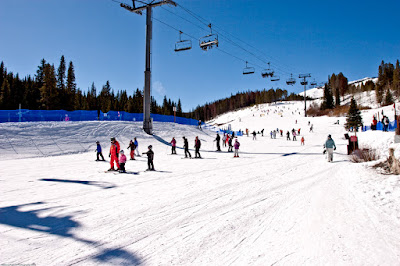
The Frisco Pedestrian Promenade will return to Main Street this summer, and with more than three months to plan, officials are hopeful they’ll be able to improve on the concept from last year.
The Frisco Town Council discussed the future of the promenade during a work session Tuesday, March 9, and while a consensus ultimately formed to bring the attraction back — along with some improvements — some members of the council pushed back against its return.
Earlier this month, Frisco issued a survey to businesses and residents hoping to get their opinions on the promenade’s potential return. Of the more than 300 respondents, more than 85% said they’d like to see it back this summer. About 55% of respondents were Frisco residents, about 16% were either business owners or managers, and about 14% identified as both a business owner and resident.
Respondents also provided insights into how they’d like to see the concept improve, with many voicing a desire to see more shaded areas, painted fencing and upgrades to the overall beautification of Main Street.
The council largely agreed that improvements could be made, in particular in terms of decoration. Council member Melissa Sherburne suggested bringing in the Make Frisco artist collective to help.
“I’d like to propose that we start that conversation early so we can get the ball rolling and really be thoughtful to bring the promenade to life a little bit more in terms of light and color and sort of accenting what we did last year,” Sherburne said.
Others emphasized that the promenade was a good opportunity for bringing the community together, and that it fit in well with the town’s strategic goals, even outside of motivations brought on by COVID-19.
“Last year, the ‘why’ was very much COVID related, but it doesn’t have to stay that way,” council member Jessie Burley said. “That’s how good projects evolve. And so I think even if the ‘why’ this summer isn’t necessarily COVID related, the ‘why’ is the community engagement and the energy we saw coming out of this project last year. … Seeing the activation of that last year, you know when we go back to our goals and our vision about trying to engage the community and bring them out, this is checking all of those boxes.”
Council member Dan Fallon came out against the promenade’s return, saying that he didn’t want to default to a pedestrian-only Main Street without first knowing what potential COVID-19 restrictions the town would be dealing with this summer and that the concept might fall flat if things begin to return to normal.
“I don’t think that the promenade, outside of those (COVID-19) constraints, floats enough boats to make it a net benefit to the community,” Fallon said. “… The promenade was really a salient social feature primarily, I think, because of the absence of anything else. … At the end of the day, before COVID, Main Street wasn’t broken in my world. The parklets were an interesting idea, and I think we can expand on that. But right now, I’m reticent to be giving up public space to private enterprise for their benefit without some other really demonstrated social benefit or community benefit. I’m not seeing it.”



